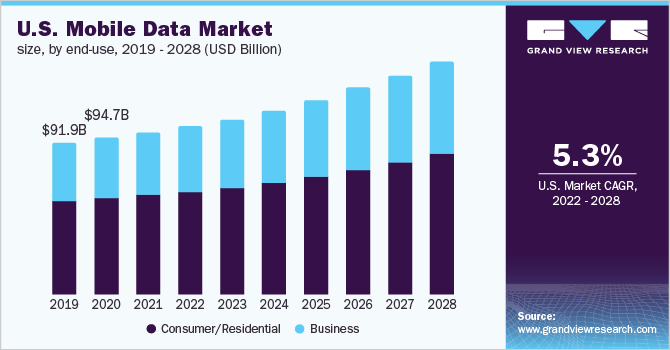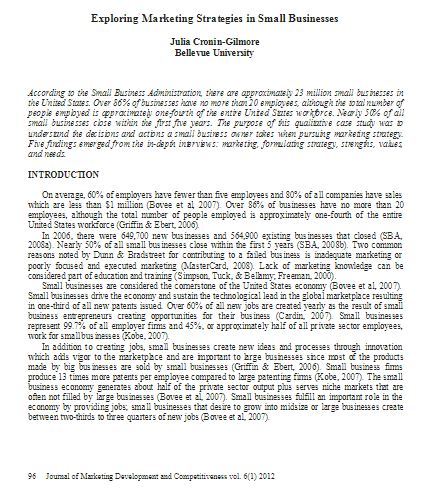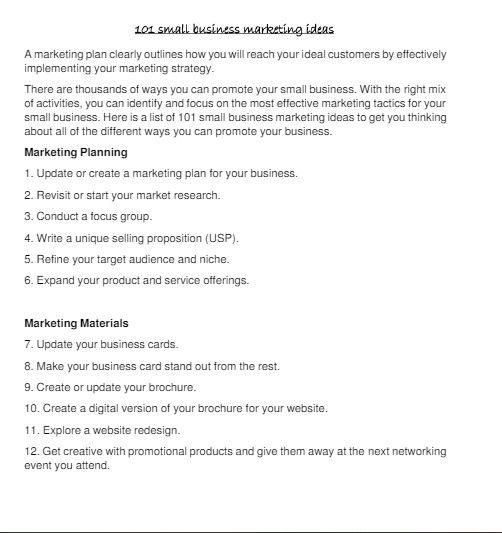Marketing is crucial for any successful business, but it can be particularly challenging for small business owners, who often juggle limited budgets and bandwidth. An effective small business marketing strategy tailored to your specific operations and goals, however, can help maximize impact.
Did you know that a significant 73% of small business owners handle marketing on their own? Surprisingly, despite this hands-on approach, less than a third of them feel confident in their marketing efforts. This statistic sheds light on the struggles small business owners face in navigating the marketing landscape with limited expertise.
Lack of proper investment across key channels and campaigns for small business marketing is a common hurdle, making it more challenging to achieve crucial business goals such as raising awareness, boosting leads, and driving sales. It’s evident that addressing these challenges and investing wisely in marketing activities are vital for the sustained success of small businesses.
Whether looking to build your brand, increase web traffic, improve lead generation, or directly spur profits, targeted marketing that fits your customers, products, and budget can bring big rewards. Stick to strategies that work, and you’ll see significant returns that keep your success going.
This guide will cover the core components of an integrated marketing approach for small businesses, from optimizing digital assets and leveraging technology to mastering social media and measuring performance. Let’s explore essential strategies to cost-effectively promote your products or services, connect with your audience, and accomplish business growth.
Defining your small business marketing strategy
An integrated small business marketing strategy starts with getting your core branding and positioning elements established first. Before diving into tactical promotion, take the time to sculpt a professional brand identity and compelling viewpoint that customers can connect with.
1. Build a strong brand identity
A consistent brand identity across your marketing materials, website, packaging, and more helps strengthen awareness and recognition. Some key elements to define include:
- Design a memorable logo and visuals: Begin by designing an iconic logo with colors that represent your personality. Then establish consistency in fonts, graphics, and imagery that showcase your business in a visually appealing, on-brand way. These clear visual guidelines enable the cohesive expression of your brand story wherever customers see or touch your brand.
- Clarify your brand voice: Develop a sense of the core human attributes that embody your small business. What is your personality? What emotions do you want to evoke? How do you want customers to describe you? Capture those qualities in core brand messaging that reflects your mission, reason for being, values, and attitude. Then outline a consistent brand voice through tone, style, and even slogans that frame communications and develop a personal relationship through language.
- Reinforce across all platforms: With brand identity elements defined, finalize an official standards guide that compiles logo usage, colors, images, typography, messaging, taglines, and other essentials. Then diligently apply this to your website, signage, employee uniforms, product packaging, digital assets, offline ads, and any other touchpoints under your control. By inherently integrating your personality and voice into environments and communications where customers engage your brand, you remain reliably recognizable and aligned.
This vital upfront stage of honing your inner brand makes subsequent marketing genuinely reflect who you are as a business at your core. By defining a unique brand essence, you can create specific positioning that resonates with customers and is easily recognizable to them.
2. Develope a Unique Value Proposition (UVP)
Once you’ve established your inherent brand identity through visual, verbal, and experiential cues, the next phase in small business marketing is conveying your tangible competitive difference and value.
The marketing you put forth needs to showcase how your offerings distinctly meet customer needs better than alternatives – these unique selling points framed around consumer benefits are called unique value propositions. Crafting compelling, convincing value propositions tailored to your ideal audience is crucial for positioning why your brand deserves attention.
Follow these tips for spotlighting your greatest differentiators:
- Identify your key strengths: Start by objectively identifying what your small business does exceptionally well that maps to high-priority customer needs or desires. What do clients say they appreciate most? Where are the gaps competitors miss? Use market research or talk to long-time customers to uncover what makes your business special and why people keep coming back.
- Connect benefits to needs: Highlight your strengths in a way that matters to your customers. Explain why they should choose you by focusing on how your strengths meet their needs, solve problems, and make their lives better. Craft these messages around what your customers care about, instead of just listing business features.
- Compare against competitors: As a small business trying to capture customers’ attention and loyalty, it’s critical to set yourself apart from substitute solutions. Identify your unique strengths and what customers love about your product or service, then compare these directly with competitors to show why you’re the best choice. Test different messages side by side to find what works best.
With clarity on your brand foundations and a spotlight on your meaningful differentiation to customers, it becomes far easier for your small business marketing to resonate. Any promotions can credibly play back your identity and reinforce why people should turn to you over alternatives.
Read more: Fascinating Marketing Tactics That Can Help Your Business Grow: Small Business Marketing: Full Guide3. Outline a targeted marketing game plan
Once you’ve figured out what makes your brand special and why people should choose you, the next step is to create a practical marketing plan. Identify who you’re trying to reach, set clear goals, choose the best ways to reach your audience (like social media or ads), and decide how much money to spend.
This plan will help you put your brand into action and connect with customers successfully.
- Define your target customer: Start by getting crystal clear on who your brand is meant for. Specify the demographic and psychographic profile of your ideal buyer – their age, location, gender, values, behaviors, and other attributes shaping their preferences and needs aligned to your offerings. Also, group these into primary and secondary audience segments for tiered marketing.
- Set measurable goals: Now transform your overarching business revenue aims into specific, quantifiable marketing KPIs across awareness, engagement, lead generation, and sales conversion goals. Set benchmarks for digital traffic, content downloads, email open rates, call inquiries driven, free trials signed up, customer repeat rate, and other metrics to track campaign impact over time.
- Map out strategies & channel mix: Combine your customer profiles and goals to plan how to reach them. Take into account where your audience looks for information – maybe moms rely on social media and word of mouth, while contractors need trade journal ads and direct mailers. Create strategies for things like building awareness, nurturing leads with content, using email and text campaigns, and optimizing sales, based on who you’re targeting.
- Determine campaign budgets: Once you have plans for reaching goals and specific audiences, put together an annual budget broken down by channels, campaigns, and tactics using expected results as a guide. Allocate higher budgets to activities with the highest ROI potential in reaching your targets, while testing smaller budgets on secondary ideas, leveraging owned channels first. Be ready to adjust budgets based on performance data over time.
Outline what success looks like based on metrics. This detailed game plan sets your small business marketing roadmap for executing impact-driven campaigns powered by your strong brand.
Rather than taking a scattered approach, align marketing decisions to your main goals. Here is an example format to document planned budget distribution across tactical areas:
| Marketing Tactic | Goal | Budget | Timeline |
| SEO Content | Increase organic traffic by 30% | $500/month | Ongoing |
| Pay-per-click Ads | Generate 75 new leads | $750/month | Q3 Campaign |
| Sponsor Local Event | Boost brand awareness | $1500 one-time | Summer Festival |
Emerging trends in small business marketing
The ways in which today’s digitally-savvy buyers research, discover, and make purchasing decisions are evolving faster than ever along with an accelerated change in technologies available for brands to connect with customers.
For small businesses, it’s crucial to understand the leading shifts influencing marketing’s future to effectively capture attention and beat bigger competitors.
Overview of current trends in small business marketing
Small business marketing today is being shaped by a few key shifts – rapidly advancing technology, changing consumer behaviors and expectations, and economic fluctuations. Key trends shaping this landscape include:
1. Online research dominance: Buyers now research and make decisions predominantly online.
2. Mobile takeover: Smartphones are primarily used for searching, shopping, and communication.

Source: Grand View Research
3. Demand for personalization: Customers prefer personalized, interactive content over generic ads.
4. Experience over products: Memorable experiences are valued more than just products.
5. Native content preference: Interruptive ads are less effective; native content is more engaging.
6. Privacy regulations impact: GDPR and similar rules limit access to user data and tracking.
Being aware of these trends helps small businesses navigate the evolving marketing terrain and strategically position themselves for success in an increasingly digital and experiential marketplace.
Technology-driven marketing strategies:
To navigate the dynamic shifts in today’s business landscape, small enterprises are progressively embracing innovative, technology-driven strategies such as:
- Search engine optimization to tap into relevant local keyword searches
- Pay-per-click ads on Google/Facebook to target local buyer groups
- Social media advertising to build awareness
- Ad testing and optimization to iterate campaign creative
- Email/SMS capabilities to nurture leads with personalized content
- Video marketing on sites like YouTube and TikTok to create engaging, personality-driven video content
- Website chatbots to instantly engage visitors and capture contacts
- Automation software to schedule multi-channel content across the buyer journey
- Customer data analytics to glean actionable insights that inform campaigns
By leveraging these cutting-edge digital strategies and emerging AI tools into your small business marketing, you can break through the noise to reach today’s increasingly distracted buyers in more targeted, measurable ways across channels and devices. The key is tapping into platforms where your targeted audiences are already actively engaging each day.
Read more: Boosting Your Medical Spa Sales with Text Message Marketing: 7 Best Practices: Small Business Marketing: Full GuideStreamlining operations through all-in-one software
Combining essential business functions in one integrated tech solution helps small businesses streamline operations and enhance strategic customer experiences. All-in-one platforms like Yocale are tailored specifically to industry needs.
Here are some of the key features of Yocale:
- Scheduling calendar: Automates appointment booking.
- Online booking: Clients self-schedule services.
- Client management: Centralized customer profiles and history.
- Custom forms: Brand-aligned new client questionnaires.
- Invoicing & payments: POS, retail, invoice reconciliation.
- Virtual consultations: Remote video conferences.
- Marketing: Calendar filling, promotions, and customer engagement.
Rather than jumping between scheduling software, marketing tools, POS systems, and client data, Yocale combines must-have functionality into a single platform. With client profiles, appointment calendars, marketing capabilities, and a more unified dashboard view, small businesses can deliver more seamless, personalized customer experiences. Appointment setting to follow-up is streamlined for staff through consolidated interfaces. And from a client lens, consistent branding and interactions build trust.
By eliminating fragmented technologies, and using all-in-one solutions like Yocale, the result of your small business marketing strategy will lead to improved efficiency, understanding, and customer service.
Holistic marketing strategy for your small business
Creating a complete marketing plan helps small businesses connect with new customers and keep existing ones loyal. A comprehensive small business marketing strategy covers all bases, using various channels to attract, engage, and convert customers. This way, even small teams can get the most out of their marketing efforts and make smart investments.
Here is what you need to do to have a holistic marketing strategy:
1. Understanding your target audience
Get crystal clear on who you want to reach and what motivates purchase decisions in order to inform precise messaging.
- Create rounded customer personas combining demographic and psychographic details to represent your ideal buyer segments. Understand their goals, values, common objections, and exact needs fulfilled by your offering.
- Start with surface-level info like location, age, and gender, and then dive deeper into traits like personality, interests, and preferred content format to shape comprehensive audience profiles.
- Gather data through surveys, interviews, and focus groups. Analyze competitors’ followers using tools like social listening for added context in your market research. This will help you understand your customers better and tailor your offering to their preferences.
2. Improving your digital presence
With buyers now spending the majority of time discovering, researching, and even making transactional decisions online, ensuring your owned digital touchpoints like your website and social channels drive meaningful engagement and conversions is more vital than ever. Core focus areas include:
– Website optimization
Your website likely serves as the digital hub – optimize every element to capture, inform, and motivate ideal visitors.
- Compelling content across key pages, blogs, and visual media.
- SEO best practices onsite and technically to drive organic traffic.
- Frictionless navigation, calls-to-action, and lead capture forms.
- Mobile responsiveness and site speed.
Want to Optimize Your Website?
Check Yocale’s Marketing Packages for Website Management – SEO – Paid ad search
– Review management
Actively monitor and address feedback shared online to manage reputation.
- Set up alerts on review sites to instantly see mentions.
- Respond promptly and monitor sentiment over time.
- Spotlight standout praise through owned channels.
– Social media leverage
Drive measurable business impact by engaging followers on key social sites.
- Craft appealing social content aligned with your brand.
- Run targeted social ad campaigns connected to conversion goals.
- Embed and amplify social on the website and other media.
– Local SEO visibility
Drive discovery and conversions from nearby searchers.
- Optimize on-site elements for local search visibility, like metadata and schema markup.
- Manage and update key listings like Google My Business.
- Earn and promote online reviews, local links, and geo-targeted content to stand out to nearby customers.
3. Mastering SEO content marketing
Taking a data-driven approach to creating and distributing relevant, valuable user-generated content optimized for search visibility allows you in your small business marketing to attract qualified organic traffic that converts to sales.
– Keyword research
Effective SEO content marketing begins with thorough keyword research. Identifying the right keywords allows businesses to understand what their audience is searching for and tailor content accordingly. Here are key aspects of this process:
- Tools for effective SERP analysis
Conducting a thorough SERP (Search Engine Results Page) analysis is vital for understanding the competitive landscape. The following table outlines the top keyword research SEO software options for effective SERP analysis:
| Software | Key Features |
| SEMrush | – Extensive keyword data and search volume – Questions and auto-complete keyword suggestions – Competitor keyword gap analysis |
| Ahrefs | – Million keywords database with search volume data – Keyword difficulty scoring – Trend graphing and tracking |
| KWFinder | – Suggesting keyword extraction – Questions and answer style keywords – Negative keyword identification |
| Moz | – Domain and page-level keyword recommendations – Backlink analysis and link building insights – On-page SEO recommendations and audits – Rank tracking for target keywords |
- Targeting low-competition/high-volume keywords:
Strategically selecting keywords with low competition and high search volume is crucial. This approach increases the chances of ranking higher on search engine results, driving more organic traffic.
– Creating landing pages:
Landing pages serve as crucial touchpoints for potential customers. Optimizing these pages is essential for converting visitors into leads. Here are key considerations:
- Topic clustering:
Organizing content into topic clusters helps search engines understand the relevance of different pages. This enhances the overall SEO of the website and improves the user experience.
Related Article: Private: 22 Best Small Business Podcasts in 2022 (So Far): Small Business Marketing: Full Guide- Lead gen components:
Incorporating lead generation components on landing pages, such as contact forms, call-to-action buttons, and downloadable resources, encourages user interaction and facilitates the conversion process.
– Producing valuable content:
The heart of SEO content marketing lies in producing valuable and relevant content that addresses the needs of the target audience. Here are the essential elements:
- Blog and video:
Maintaining an active blog and creating engaging video content can significantly boost SEO. Regular updates demonstrate expertise, while multimedia content appeals to different audience preferences.
- Repurposing assets:
Maximize the value of existing content by repurposing it into different formats. For example, turning a blog post into a podcast or creating infographics can expand the reach of your message.
- Promoting off-site:
Diversifying content promotion beyond your website is critical. Leveraging social media, guest posting, and influencer collaborations can amplify your content’s reach and impact.
4. Managing social media marketing
Social media platforms present a major opportunity for small businesses to drive brand awareness, engagement, and leads when leveraged strategically. Choosing the right networks for your audience and crafting compelling content and interactions can amplify your marketing impact.
– Evaluating platforms by audience
With more than 77% of small businesses using social media in their marketing, prioritizing key networks based on ideal customer demographics and behaviors is crucial for success.
To effectively evaluate social media platforms for small business marketing, let’s consider key demographic information for Facebook, Instagram, LinkedIn, and Twitter.
| Platform | Primary Audience | Gender Distribution |
| Diverse audience across age groups, with a significant presence of users aged 18-34 | Fairly balanced, with 43.5% female and 56.5% male | |
| Skewed towards a younger audience, primarily aged 18-24 | Slightly more male users (51.8%) than female (48.2%) | |
| Professional audience, with a focus on ages 25-34 | Slightly more male users (57.2%) than female (42.8%) | |
| Popular among users aged 35-44 | Slightly more male users (70.4%) than female (29.6%) |
This overview shows where your target customer base is most active and what motivates engagement on each network. Use it to focus your participation strategically.
– Crafting engaging social content
Given the constant algorithm changes and expanding competition, simply maintaining a social media presence is no longer enough. Follow best practices for resonating content:
- Captivating visual: Utilize vivid photos, meme graphics, and short videos for maximum engagement.
- Tailored messaging: Align post topics with each platform’s unique audience interests.
- Interactive engagement: Foster interaction through polls, hashtag campaigns, and AMA sessions.
- Value-centric education: Provide insightful tips and insider advice to offer genuine value to your audience.
5. Evaluating advertising channels
Assessing advertising channels is a critical step in crafting a well-informed strategy for your small business marketing. While each channel possesses its unique strengths, understanding their intricacies is essential for making informed decisions.
Here are three key advertising channels:
– Search ads:
Search ads are a cornerstone of online advertising, leveraging keyword-driven strategies to connect businesses with potential customers actively searching for relevant products or services.
This channel involves meticulous campaign management, where advertisers carefully select and bid on keywords to ensure their ads appear prominently in search engine results. The success of search ads lies in the precision of keyword targeting and ongoing optimization to maximize visibility and click-through rates.
– Display and native ads:
Display and native ads offer a visual and engaging approach to capture the attention of potential customers across various online platforms. Creative testing is a key component of this advertising channel, requiring businesses to experiment with different ad creatives, formats, and messaging to identify what resonates best with their audience.
– Retargeting:
Retargeting is a powerful strategy to re-engage users who have previously interacted with a business’s website or products. This advertising channel includes tactics such as abandoned cart recovery, where targeted ads remind users of items left in their shopping cart, and lookalike modeling, which involves identifying and targeting users with similar characteristics to existing customers.
By keeping the brand in front of potential customers who have shown interest, retargeting aims to boost conversion rates and foster customer loyalty.
6. Using offline marketing strategies
While the digital landscape offers incredible reach, it’s crucial for small businesses to embrace offline marketing strategies to solidify their local presence. Beyond the digital realm, participating in local events, sponsoring community activities, running targeted direct mail campaigns, and forming partnerships can significantly contribute to building awareness and fostering loyalty within the communities you serve on a daily basis.
Supplementing your efforts with offline tactics, such as becoming a member of the Chamber of Commerce, sponsoring local sports teams, and hosting networking events, is essential. This not only complements your online efforts but also reinforces your connections within the community.
The key is to balance local and national marketing to match your offerings, audience, and growth goals. Including offline methods shows your commitment to the community and enhances lead generation, referrals, and loyalty alongside digital marketing.
Related Article: Digital Marketing Ideas To Grow Your Small Business Online: Small Business Marketing: Full Guide7. Measuring performance and optimization
While optimizing your small business marketing strategy, it’s crucial to consider that the key to sustained growth lies in the ability to measure performance effectively and optimize strategies accordingly. This necessitates the collection of insightful data, empowering you to precisely fine-tune your approaches for enhanced effectiveness.
When measuring your performance, consider factors like:
– Monitoring essential metrics
Understanding the performance of different marketing channels is essential for allocating resources wisely and maximizing ROI. Here are some key metrics to consider across various channels:
| Marketing Channel | Metrics |
| 1. Social Media | – Engagement Rates |
| – Impression | |
| – Follower growth | |
| 2. Email Marketing | – Open Rates |
| – Click-Through Rates | |
| – Conversion Rates | |
| 3. Search Engine Optimization(SEO) | – Organic Traffic |
| – Keyword Rankings | |
| – Backlink Quality | |
| 4. Paid Advertising | – Cost Per Click (CPC) |
| – Conversion Rates | |
| – ROI | |
| – Ad Positioning |
By regularly analyzing these metrics, you gain insights into what resonates with your audience and where adjustments are needed.
– Apply custom attribution modeling
Attribution modeling is the process of assigning value to each touchpoint in a customer’s journey. While default attribution models exist, creating a custom model tailored to your business is often more insightful. Some factors can be:
- Giving credit to the initial interaction that led to a conversion.
- Crediting the final touchpoint before a conversion.
- Assigning more value to touchpoints closer in time to the conversion.
Custom attribution modeling helps you understand the unique path your customers take, allowing for more precise optimization of marketing efforts.
– Continuously optimizing through goal-tracking
Setting clear and measurable goals is the foundation of successful marketing campaigns. Establish specific, measurable, achievable, relevant, and time-bound (SMART) goals. Regularly track your progress and iterate based on performance data. This iterative approach involves analyzing campaign performance, identifying opportunities for improvement, conducting A/B testing to optimize elements, and adapting strategies based on changing market trends.
By embracing this cycle of goal setting, tracking, and iteration, your small business marketing efforts become a dynamic and evolving force poised for long-term success.
8. Building your marketing team
Establishing a strong marketing team is the cornerstone of business success. The following tips can help you find the crucial aspects of team building, guiding you through strategic decisions and essential tools for a thriving marketing strategy.
– Choosing your approach: In-house or agency
When choosing between having your own in-house team or partnering with an external agency, think about what suits your business best. Consider the perks of outsourcing, especially during busy times or for projects that need special expertise.
And don’t forget to be savvy with your budget – strategic cost management is key to getting the most value, no matter which path you decide to take. It’s like finding the perfect balance between quality and savings, tailored to what works best for you.
Here is a table that might help you:
| Feature | In-house | Outsourcing |
| Cost | High | Variable |
| Quality | High | Variable |
| Flexibility | Low | High |
| Scalability | Low | High |
| Availability | Regular business hours | 24/7 |
| Control over quality | High | Variable |
| Security and confidentiality | High | Variable |
| Communication and collaboration | Easier | Requires effort |
– Optimizing with technology: Your marketing stack
Technology is the backbone of an empowered team. Explore effective Customer Relationship Management (CRM) solutions to enhance customer interactions. Dive into the world of marketing automation to boost efficiency and scalability through streamlined automated processes.
– Continuous growth through training and testing
Nurture continuous improvement within your team through ongoing training initiatives. Keep your team updated on industry trends and best practices to stay competitive. Emphasize the importance of regular testing for marketing excellence. By refining strategies based on testing insights, your team can stay agile and responsive to market changes.
9. Bringing your small business marketing together
When strategizing your marketing efforts, you might explore diverse options, yet achieving your desired results can prove elusive. It’s crucial to recognize that success frequently depends on the adept integration of various components into a unified and potent strategy.
– Documenting strategies and calendars
One of the cornerstones of a well-executed marketing plan is meticulous documentation. Begin by crafting a detailed strategy that outlines your business goals, target audience, and the channels you plan to leverage. Also, create a comprehensive marketing calendar to map out key events, promotions, and campaigns throughout the year.
By documenting your strategies and timelines, you provide your team with a clear roadmap, fostering alignment and a shared vision for success.
– Campaign kickoffs and checklists
Effective campaign kickoffs are pivotal moments that set the tone for your small business marketing initiatives. Develop detailed checklists to ensure nothing is overlooked during the planning and execution phases.
Clearly define roles and responsibilities, set realistic milestones, and establish measurable key performance indicators (KPIs). This proactive approach minimizes the risk of oversights, enhancing the overall efficiency of your campaigns from inception to completion.
– Consistency in messaging and branding
Consistency is key when building a recognizable brand. Ensure that your messaging remains coherent across all marketing channels. From social media posts to email campaigns, maintain a unified brand voice and visual identity. Consistency not only reinforces your brand in the minds of your audience but also cultivates trust and credibility.
Regularly review and update your brand guidelines to adapt to changing market trends while staying true to your core values.
-Analysis for continuous improvement
A commitment to ongoing analysis is fundamental for the success of your small business marketing efforts. Regularly evaluate the performance of your campaigns against predefined KPIs. Leverage analytics tools to gain insights into customer behavior, campaign effectiveness, and market trends. Use this data to identify strengths, weaknesses, opportunities, and threats.
Embrace a culture of continuous improvement by learning from each campaign, refining your strategies, and staying agile in response to market shifts.
Read more: Small Business Branding Tips (from the World’s Largest Naming Platform!): Small Business Marketing: Full GuideNavigating small business marketing challenges
Small businesses often face various challenges in their marketing efforts, requiring strategic approaches to navigate these hurdles:
a) Budget constraints:
Small businesses often operate on limited financial resources, necessitating strategic priority-setting. This involves identifying key marketing channels and allocating the budget effectively.
b) Time and bandwidth limitations:
Owners and staff frequently wear multiple hats, leaving limited time for focused marketing efforts. Streamlining and automating processes where possible can help maximize efficiency.
c) Expertise gaps:
Many small business owners lack advanced marketing skills. Leveraging external expertise, such as hiring agencies or using marketing tools, allows businesses to benefit from specialized knowledge without extensive training.
d) Fragmented efforts:
Disjointed marketing efforts across various channels (social media, SEO, email) can hinder overall effectiveness. Small businesses need an integrated strategy and consistent messaging to create a cohesive brand presence.
e) Measuring ROI:
Accurately tracking marketing performance and ROI can be challenging with basic analytics. Implementing attribution modeling and setting clear goals help businesses measure the impact of their marketing initiatives more effectively.
f) Competition challenges:
Small businesses often struggle to stand out when larger players dominate market share and visibility. Tailoring marketing approaches to highlight unique selling propositions and differentiate from competitors is crucial for success.
In navigating each small business marketing challenge, a strategic and adaptive approach is paramount to not only overcome obstacles but also to carve out a distinctive and successful market presence.
Read more: Email Personalization Examples to Boost Customer Loyalty: Small Business Marketing: Full GuideConclusion
In conclusion, navigating the realm of small business marketing demands a strategic mindset and an unwavering commitment to growth. As we reflect on the key takeaways from goal-setting to digital presence and social media engagement, it becomes evident that success hinges on a multifaceted approach.
Remember, marketing isn’t a one-time sprint; it’s an ongoing marathon. Embrace it as a continuous journey of improvement and iteration. Take the first steps with confidence, knowing that each effort contributes to the overall success of your business.
FAQs
Small business in marketing refers to enterprises with limited resources and a localized focus, often employing strategies tailored to their specific niche and community.
The marketing strategy for small businesses involves cost-effective, targeted approaches such as social media marketing, local SEO, word-of-mouth, and building strong customer relationships to maximize impact with limited resources.
The 7Ps of marketing for small businesses include Product, Price, Place, Promotion, People, Process, and Physical evidence. These elements help shape a comprehensive marketing plan.
The marketing strategy for small businesses centers around cost-effectiveness, targeted approaches, and building strong customer relationships through methods like social media marketing, local SEO, and word-of-mouth.
A small business model is the plan outlining how a business intends to generate revenue and sustain itself. It includes the product or service offered, target market, revenue streams, cost structure, and key resources.
Key factors for small business success include a clear value proposition, customer focus, effective marketing, financial management, adaptability, quality products/services, strong leadership, innovation, financial planning, networking, employee engagement, and legal compliance. Combining these elements enhances the likelihood of success.
To attract customers, employ effective marketing strategies such as identifying and understanding your target audience, creating a compelling value proposition, utilizing online and offline channels, optimizing for search engines, engaging in social media, offering promotions or discounts, and providing excellent customer service. Building a strong online presence and leveraging word-of-mouth marketing can also help attract and retain customers.
To increase sales, understand your customers, employ targeted marketing, optimize pricing, enhance online presence, offer promotions, prioritize excellent customer service, cross-sell and upsell, ensure product availability, implement loyalty programs, refine sales techniques, collect customer feedback, explore partnerships, optimize the online checkout process, monitor data, and continuously innovate products or services.
Recommended books for small business marketing


1. Small Business Marketing by Ian Chaston – 312 pages


2. Exploring Marketing Strategies in Small Businesses by Julia Cronin-Gilmore – 113 pages


3. 101 Small Business Marketing Ideas by Hafizi Jamil
References
- 6 Instagram Tips for Small-Business Owners, by Small-Business Owners, Nerdwallet,
https://www.nerdwallet.com/article/small-business/small-business-instagram - Write your business plan, US Small Business Administration,
https://www.sba.gov/business-guide/plan-your-business/write-your-business-plan - Start selling with Shopify today, Shopify,
https://www.shopify.com/blog/customer-segmentation - What Is Email Marketing?, Constant Contact,
https://www.constantcontact.com/blog/what-is-email-marketing/ - Your Guide to Online Marketing: What It Is and How to Use It, Indeed,
https://www.indeed.com/career-advice/career-development/online-marketing - 30 Small Business Marketing Ideas You Need to Know & Use, Sixads,
https://sixads.net/blog/small-business-marketing/ - The Social Media Content Calendar Template Every Marketer Needs [Free Template], Hubspot,
https://blog.hubspot.com/blog/tabid/6307/bid/33415/the-social-media-publishing-schedule-every-marketer-needs-template.aspx - Marketing Strategy: Templates, Definitions, Importance, Benefits, Steps, & Types, CoSchedule,
https://coschedule.com/marketing-strategy - How to Build a Social Media Marketing Strategy (with Examples!), Tail Wind,
https://www.tailwindapp.com/blog/how-to-build-a-social-media-marketing-strategy-with-examples - Marketing in Business: Strategies and Types Explained, Investopedia,
https://www.investopedia.com/terms/m/marketing.asp




